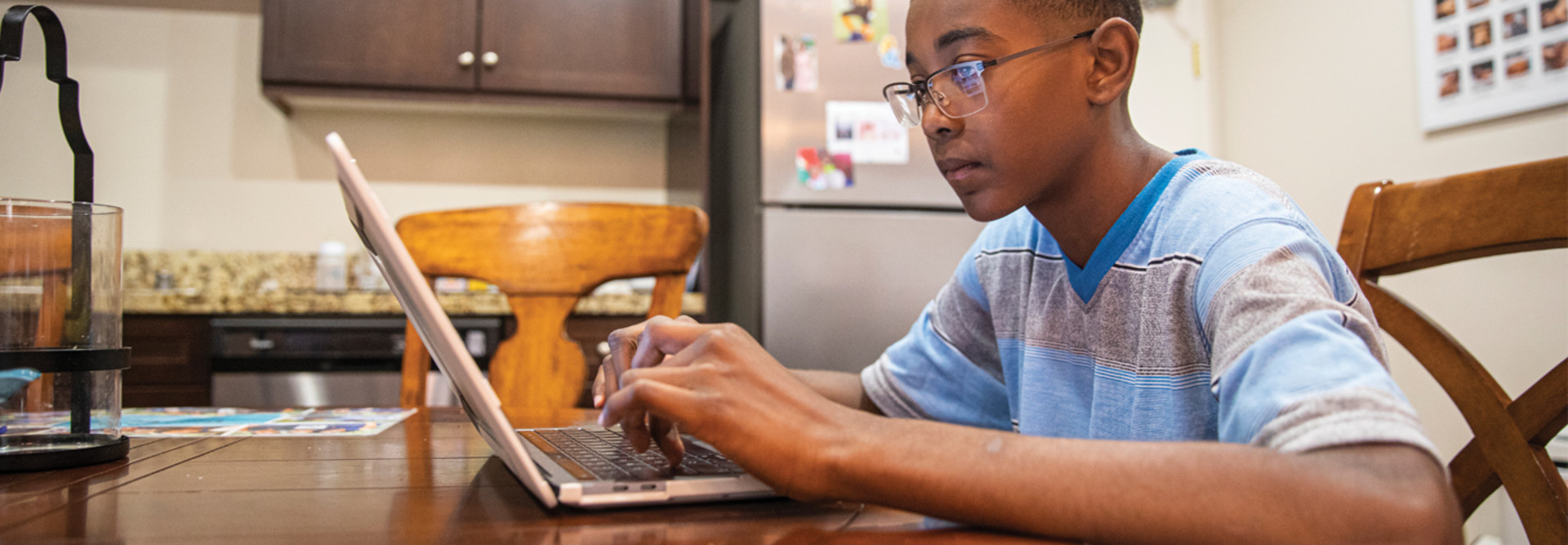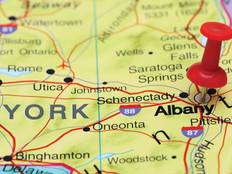“As municipalities issued shelter-in-place orders to slow the spread of COVID-19, numerous dimensions of daily life for residents moved online. Many employers shifted to teleworking, schools moved classes online, and cities relied on websites and livestreams to disseminate critical information about COVID-19,” according to a June report from the Urban Institute.
The report notes that many residents of U.S. cities often lack “the internet access, connected devices, and digital literacy to fully participate in online work, education, and civic life.”
In 221 large and medium-size U.S. cities, at least 30 percent of households still lacked a wireline broadband connection such as cable, fiber-optic or DSL in 2018, according to the Urban Institute. “In 92 cities, at least one in five households had no broadband internet of any type, including cellular data plans,” the report states.
Detroit’s CIO Pushes for Digital Inclusion
In Detroit, CIO Niblock has long been a champion of digital equity and inclusion and she has used her platform on Twitter to highlight the importance of closing the digital divide.
She recently shared an opinion column in Governing, “America’s Moral Obligation for Universal Broadband,” by Jabari Simama, an education and government consultant and a senior fellow with the Center for Digital Government. Simama served two terms on the Atlanta City Council, from 1987 to 1994, and as deputy COO and chief of staff for DeKalb County, Ga., from 2009 to 2012.
In the tweet, Niblock said she totally agrees with a statement Simama makes in the piece: “I find no solace in knowing that we predicted the importance of broadband two decades ago and witnessed insufficient action from all levels of government and industry.”
America’s Moral Obligation for Universal Broadband. I totally agree with this quote from the author “I find no solace in knowing that we predicted the importance of broadband 20 yrs ago & witnessed insufficient action from all levels of govt & industry.” https://t.co/zeH4ayQAhg
— Beth Niblock (@DetroitCIO) August 24, 2020
In Detroit, there are several efforts underway to close the digital divide. One is through Digital Detroit, a partnership between the city and Rebrand Cities, a global design company that wants 10,000 small businesses online, according to Next City.
In April, Detroit launched a $23 million project called Connected Futures to guarantee connectivity to public school students, and raised money from a coalition including DTE Energy, the Skillman Foundation and Quicken Loans, The Detroit News reports.
All of the students who enrolled in the program, regardless of their choice to go to school online or in person, have been offered a tablet, six months of free Wi-Fi and technical support, according to Model D.
READ MORE: Find out how Hartford, Conn., is working to close the digital divide.
Philadelphia Launches Broadband Program for Students
In Philadelphia, Wheeler has taken to Twitter to highlight the city’s efforts to close the digital divide for students and their families.
#PHLConnectED is one of 3 strategies by @PhiladelphiaGov to close the digital divide for Philly households https://t.co/TrUHUX228F 1/3
— Mark Wheeler, AICP (@Wheelmrk) September 22, 2020
In August, the city launched PHLConnectED, a collaborative effort aimed at connecting up to 35,000 low-income K–12 student households with internet service and devices.
“The program, which will also provide digital skills training and tech support for families, is an urgent response to schools moving to virtual learning in the upcoming academic year as a result of the global COVID-19 pandemic,” the city notes in a press release.
The city and its school district, along with partners such as the Fund for the School District of Philadelphia, Comcast and the William Penn Foundation, are focused on providing “free wired, high-speed, reliable broadband internet to the home from Comcast’s Internet Essentials program, or a high-speed mobile hotspot for families who are housing-insecure or need a portable option.”
The program will also include the distribution of devices, such as Chromebooks, tablets, or computers. The program will also offer “free skills training and tech support for students, families and teachers to ensure they not only get connected, but also stay connected and safely take full advantage of all that the internet has to offer.”
MORE FROM STATETECH: Find out how New York City is working to bridge the digital divide for seniors.
Washington, D.C., Expands Connectivity for Residents
In Washington, D.C, Parker, the district’s CTO, recently retweeted a Washington Post article about the city’s efforts to expand broadband access.
D.C. has finalized plans to cover the Internet bills for 25,000 low-income families for a year. They will begin reaching out to families w/ school children today who qualify for food stamps or TANF. https://t.co/s5KRb4yw74
— Perry Stein (@PerryStein) September 8, 2020
Under the $3.3 million program, the city will pay the cost of monthly internet bills for “about 25,000 low-income families who have students in the city’s traditional public and charter schools,” the Post reports.
The paper adds:
The city is using money it received from a federal pandemic response fund, the Governor’s Emergency Education Relief Fund, to cover at least 12 months of bills for each family, totaling around $120 a household. They hope to find more funds to continue the program beyond a year.
Parker is quoted in the article as lauding the program, adding that an internet connection at home is the most reliable way for students to get access to broadband. “This is the most cost-effective solution in the short term to making sure that these families have Internet access,” she says. “During the most unprecedented virtual school year, this is the fastest and most effective way to do it.”











